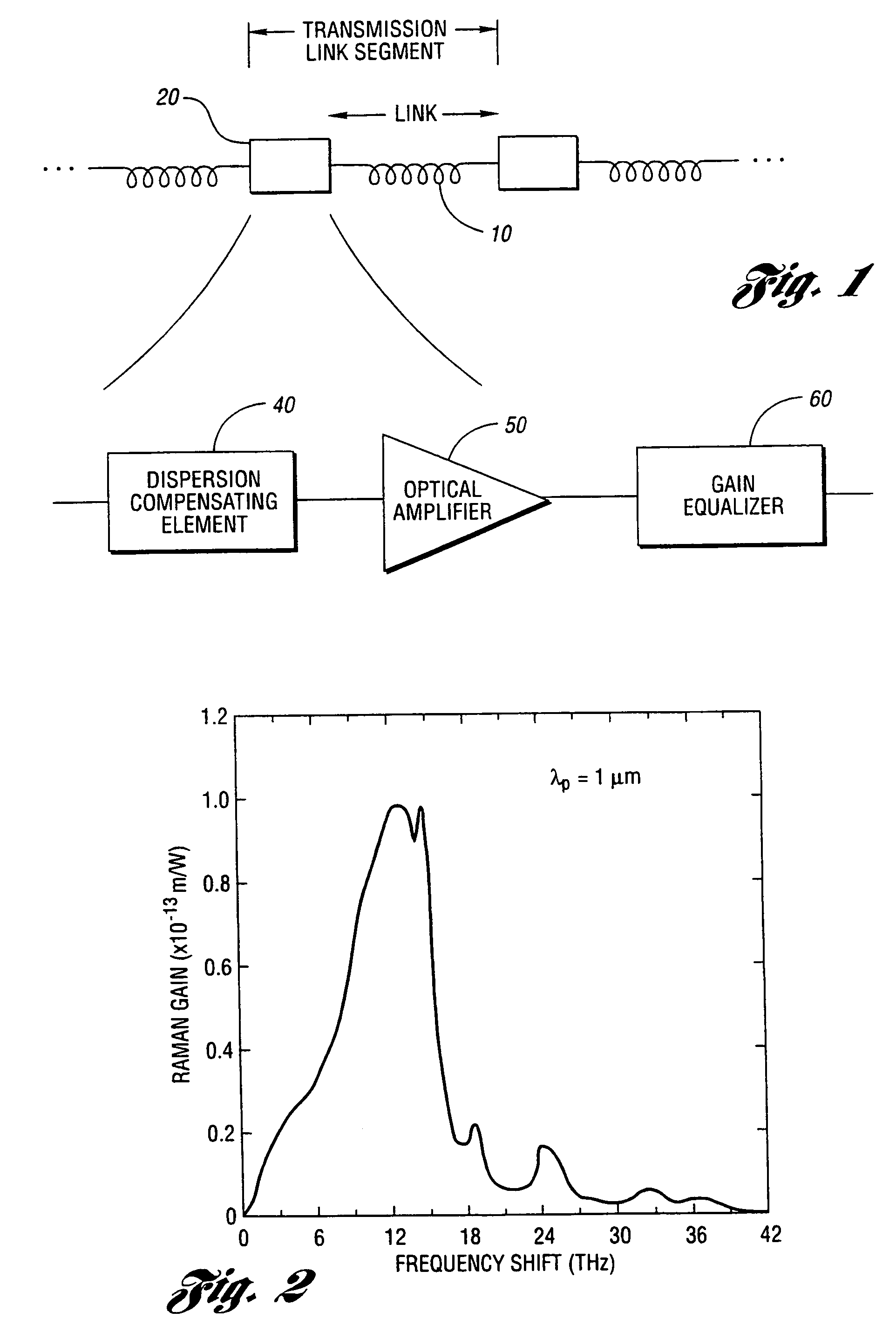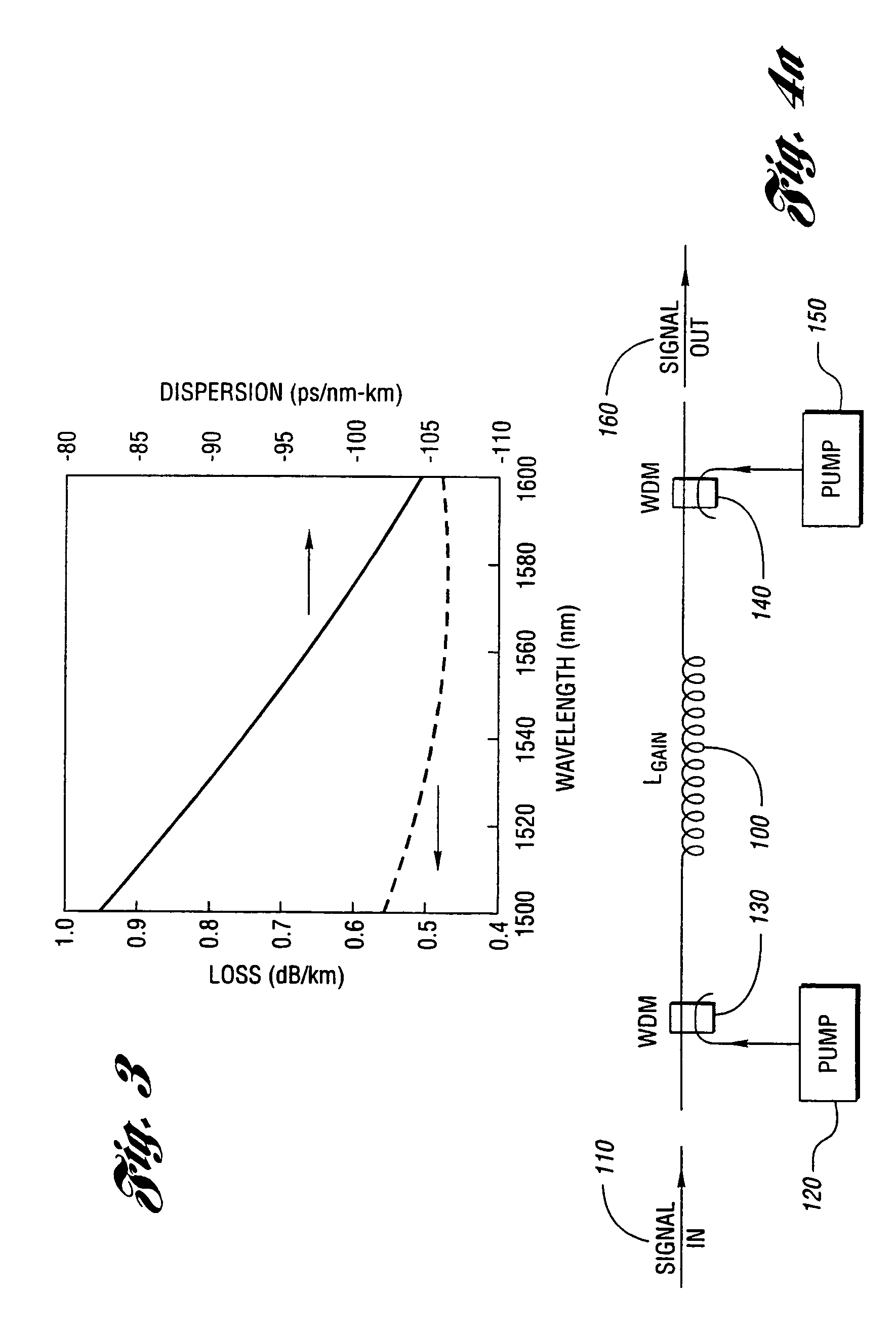Fiber-optic compensation for dispersion, gain tilt, and band pump nonlinearity
a fiber optic and gain tilt technology, applied in the field of optical amplifiers, can solve the problems of loss, dispersion and gain equalization, inter-channel cross-talk, and difficult operation of wdm systems from around 1540–1560 nm, and achieve the effect of reducing the cost of operation, simplifying the system implementation, and minimizing the change of gain tilt across the currently used conventional band
- Summary
- Abstract
- Description
- Claims
- Application Information
AI Technical Summary
Benefits of technology
Problems solved by technology
Method used
Image
Examples
Embodiment Construction
[0071]The present invention combines the functions of optical amplification and dispersion compensation advantageously to simplify the implementation of dispersion managed systems. The DMRA uses Raman amplification in a fiber that dispersion compensates for the surrounding transmission link.
[0072]More specifically, the DMRA of the invention comprises an input port for inputting an optical signal having a wavelength λ, a distributed gain medium for receiving the optical signal and amplifying and spectrally broadening the same therein through Raman scattering, a pumping means operated at wavelength λp for generating a pumping light to pump the distributed gain medium, and an output port for outputting the amplified and spectrally broadened optical signal. The dispersion and length of the distributed gain medium is selected to be of the same magnitude of dispersion-length product as the transmission link but of the opposite sign of dispersion. The fiber is made single spatial mode for ...
PUM
 Login to View More
Login to View More Abstract
Description
Claims
Application Information
 Login to View More
Login to View More - R&D
- Intellectual Property
- Life Sciences
- Materials
- Tech Scout
- Unparalleled Data Quality
- Higher Quality Content
- 60% Fewer Hallucinations
Browse by: Latest US Patents, China's latest patents, Technical Efficacy Thesaurus, Application Domain, Technology Topic, Popular Technical Reports.
© 2025 PatSnap. All rights reserved.Legal|Privacy policy|Modern Slavery Act Transparency Statement|Sitemap|About US| Contact US: help@patsnap.com



